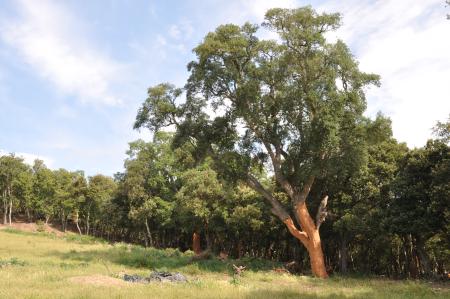
Objective:
Cork harvesting, every 10 to 15 years depending on the region, requires trees in good phytosanitary conditions and is a potential source of stress, especially if debarking is poorly done. Hence the interest in having a tool to assess the trees phytosanitary conditions, which can be used as a decision support tool when carrying out silvicultural operations. This tool is based on a visual diagnostic method called Archi, developed by CNPF. ARCHI is based on the reading of tree crown architecture using a specific identification key referring to different architectural types related to resilience capacities.
Context:
The cork oak is of significant economic interest and constitutes an habitat of community interest (9330 - Quercus suber Forest) for its environmental and heritage value. Occupying mainly the hot and dry stations of the south of France, the cork oak is exposed to the effects of climate change. Since 2013, this species benefits from a phytosanitary monitoring network managed by the Department of Forest Health (DSF). To supplement these observations, as part of an Interreg POCTEFA III project entitled “ECTAdapt 4” (led by the Pyrénées-Orientales department, the Diputació de Girona and the CILMA), the CNPF and the IML were commissioned to develop a diagnostic tool for the physiological state of the cork oak.
Contacts:
Christophe DRENOU, christophe.drenou@cnpf.fr, https://www.cnpf.fr/n/le-service-de-recherche-et-developpement-r-d-du-cnpf/n:1469
Renaud PIAZZETTA, institutduliege@free.fr, http://www.institutduliege.fr/
Further information:
Drénou C., Caraglio y., (2019) Parlez-vous Archi ? Les principales définitions de la méthode Archi. Forêt Entreprise, 246, 28-35.